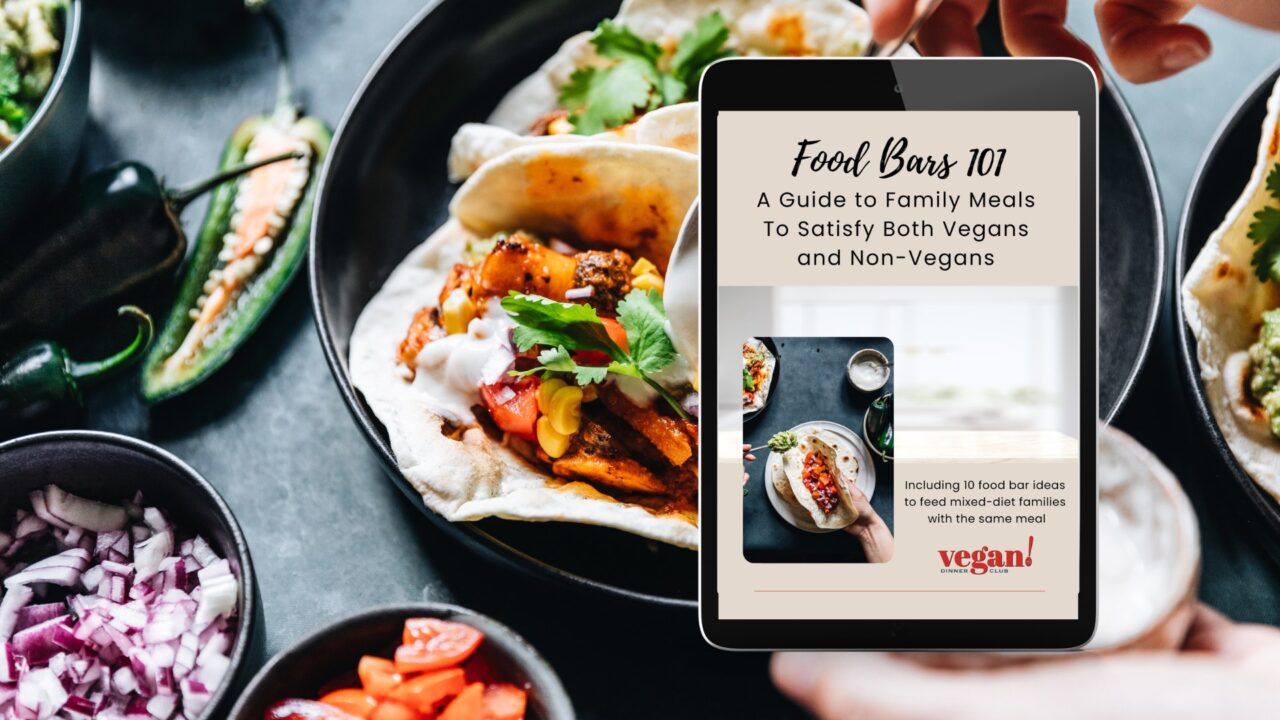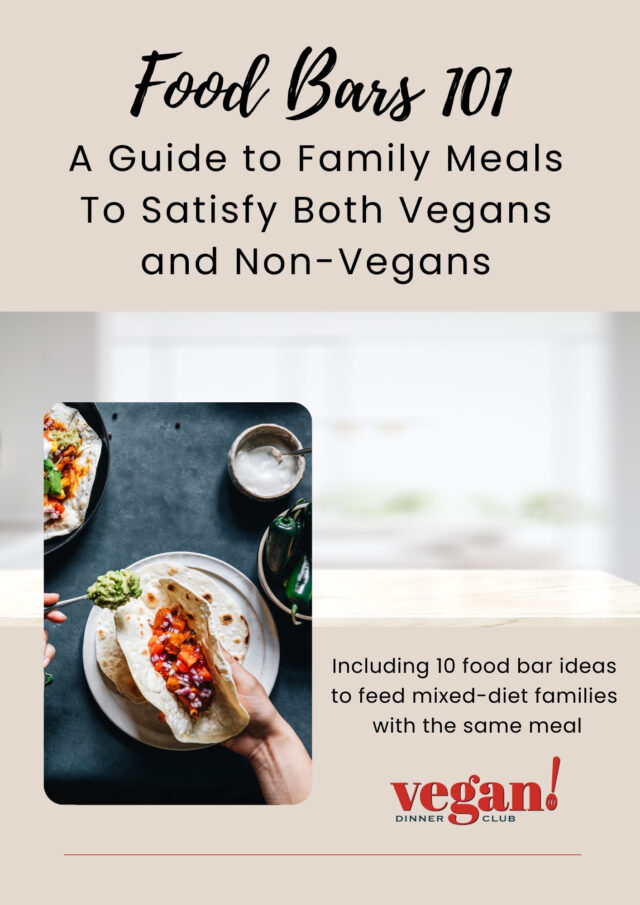Food bars are one of my favorite ways to feed me and my non-vegan family. They’re versatile and inclusive, ensuring everyone has something to eat at the table. They offer a unique way to customize meals, allowing each family member to create a dish that suits their taste while simplifying the preparation process. The concept of food bars is one of my go-to meals for my mixed-diet family as it enables everyone to enjoy a shared meal without compromising on their personal dietary choices.
In this post, I will guide you through setting up various types of food bars that cater to both vegans and non-vegans. (For more ideas, get my free download with some of my family’s favorite food bars.) Whether you’re a seasoned cook or just starting out, these food bars will help you create delicious, healthy meals that bring your family together.
Table of Contents
What is a Food Bar?
A food bar is a meal setup where various components of a dish are laid out separately, allowing each person to assemble their own customized meal. This concept works exceptionally well for families with mixed dietary needs because it provides the flexibility to accommodate everyone’s preferences without preparing multiple different dishes.
Why You’ll Love Food Bars
Customization and Flexibility: Food bars allow each family member to tailor their meal to their liking. Whether someone prefers more veggies, a specific type of protein, or extra toppings, they can create their ideal plate without any hassle. This customization ensures that everyone, from vegans to non-vegans, can enjoy their meal just the way they want it.
Simplified Meal Prep and Clean-Up: By preparing a variety of components that can be mixed and matched, meal prep becomes more straightforward. Instead of making separate meals for different dietary needs, you can focus on preparing a few key ingredients. Clean-up is also simplified since you’re dealing with fewer pots and pans and serving everything in a buffet-style setup.
Family Participation and Fun: Food bars make mealtime interactive and fun. Family members can get involved in setting up the bar, choosing their ingredients, and experimenting with different combinations. This participation can make meals more enjoyable and can also help picky eaters find new foods they like.
Components of a Food Bar
Plant-Based Main: Start with a plant-based main component that serves as the base for the meal. This could be grains, greens, or a plant-based filling.
Protein Choices: In addition to a main plant-based protein like beans, tofu, or lentils, also include one non-vegan protein option such as grilled chicken, beef, or shrimp. Simplify and unify the options by using the same marinade or seasoning blend.
Condiments and Toppings: Provide a variety of condiments and toppings that cater to both vegans and non-vegans. For instance, you could offer salsa, guacamole, vegan cheese, and veggies, as well as include dairy sour cream and shredded cheese for a taco bar.
Vegan Side Dishes: Incorporate side dishes that everyone can enjoy, such as roasted vegetables, salads, or vegan-friendly dips and spreads. These sides complement the main components and add variety to the meal. By incorporating sides that everyone can eat, you’ll round out the meal with less prep, and introduce your family to more plant-based foods.
Types of Food Bars
There are numerous ways to create a food bar — that’s part of the fun of it! Experiment to create your own unique food bars based on your family’s tastes and meal favorites. Below are just a few of the most commonly created food bars for dinner.
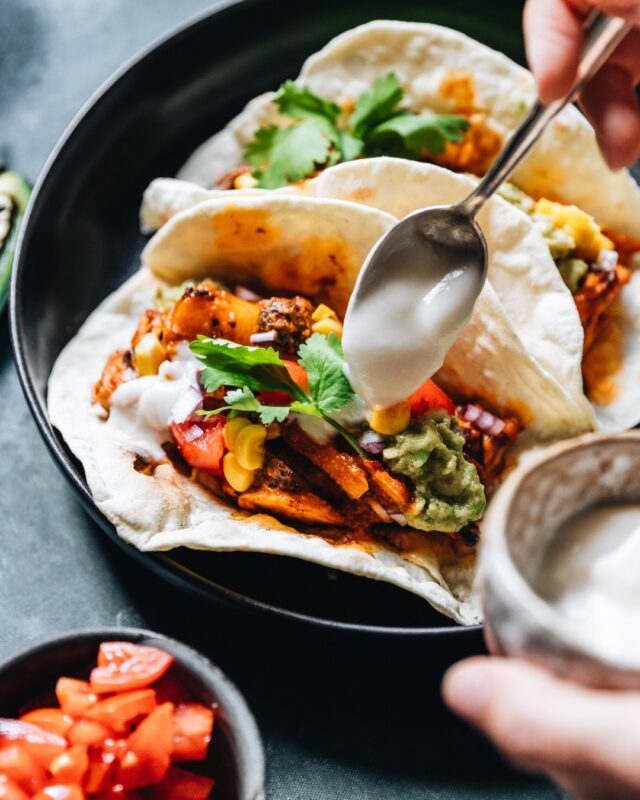
1. Taco Bar
Base Options:
- Corn and flour tortillas
- Lettuce wraps
Protein Choices:
- Seasoned beans and greens
- Homemade vegan chorizo
- Crumbled tofu or tempeh cooked with taco seasoning
- Ground chicken, beef or turkey cooked with taco seasoning
Toppings and Sides:
- Condiments: Salsa, guacamole
- Vegan cheese
- Veggies (lettuce, tomatoes, onions, bell peppers, jalapeños)
- Non-vegan options: Sour cream, shredded cheese
Tips for Success:
- Prepare and season proteins in advance and store them in airtight containers.
- Arrange toppings in separate bowls for easy access and quick assembly.
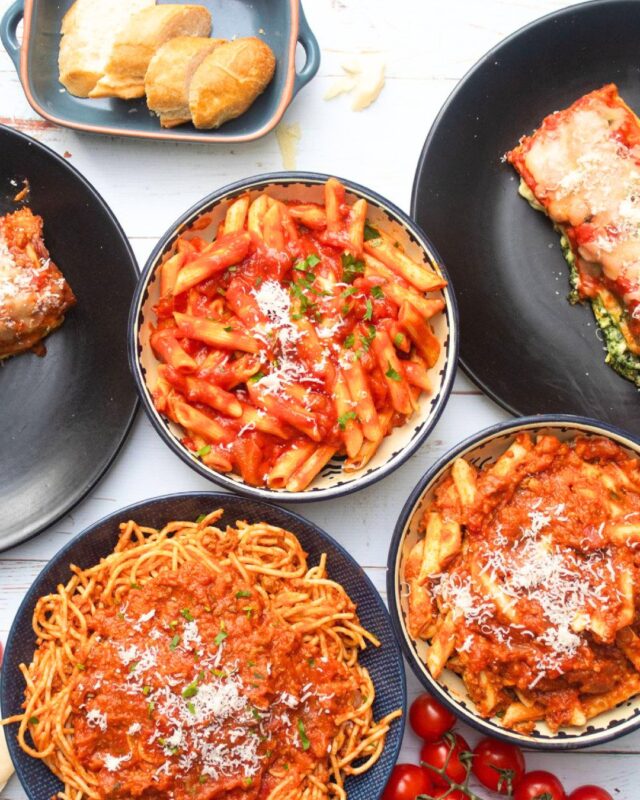
2. Pasta Bar
Base options:
- One or two pasta types (with gluten-free option if needed): ravioli, linguine, rotini, etc.
- Casserole such as lasagna or a pasta skillet
Sauce Selections:
- Marinara
- Pesto (vegan and non-vegan option)
- Alfredo (vegan and non-vegan option)
Protein Add-Ins:
- Italian sausage (vegan and non-vegan)
- Meatballs (vegan and non-vegan)
Topping Options:
- Parmesan cheese (vegan and non-vegan)
- Sliced olives
- Fresh basil or other herbs
- Roasted veggies
Tips for Success:
- Prepare sauces ahead of time and reheat just before serving.
- Mix and match pasta types with different sauces for variety.
- Use fresh herbs and spices to enhance the flavors of your dishes.
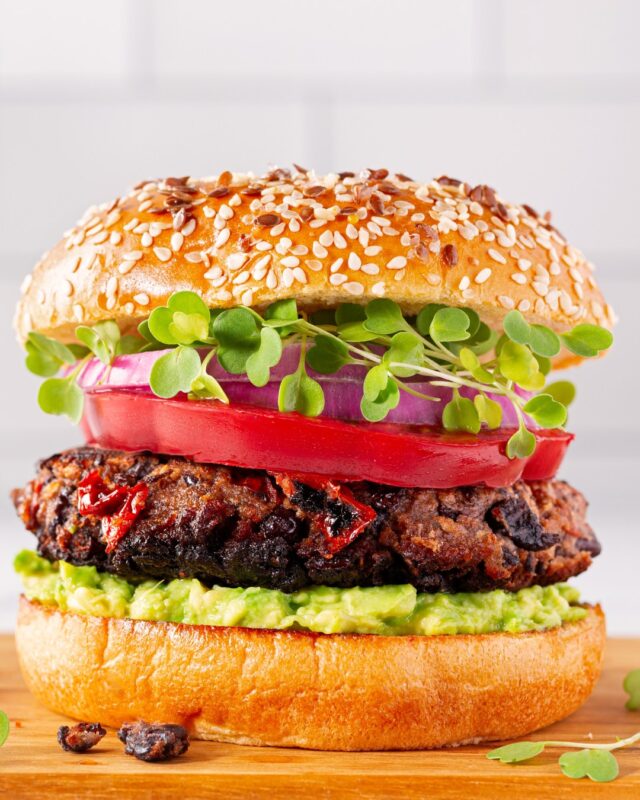
3. Burger Bar
Base Options:
- Veggie patties
- Non-vegan burger patties
Sauces and Condiments: Choose an overall theme to tie your condiments and toppings together.
- Western: Barbecue sauce, chili, onion rings
- Latin: Guacamole, pickled onions, cheddar cheese
- Traditional: Ketchup, Thousand Island dressing, mustard, lettuce, tomato
Tips for Success:
- Prepare burger patties in advance and keep them chilled until ready to cook.
- Store sauces in squeeze bottles for easy dispensing.
- Slice and prep veggies and toppings ahead of time and store them in airtight containers.
For more 7 more food bar ideas, get my free download here.
Additional Tips for Creating Food Bars
Planning and Preparation
Plan Ahead and Prep Ingredients: Planning ahead is crucial for the success of your food bars. Start by deciding on the type of food bar you want to create and make a detailed shopping list. I include this meal idea once a week in my family’s meal plan template.
Consider the dietary preferences of your family members and ensure you have a good balance of plant-based and non-vegan options. Prepping ingredients in advance can save you time and reduce stress during mealtime. Chop vegetables, prepare sauces, and cook proteins ahead of time. Store these prepped items in airtight containers so they stay fresh and are ready to use when it’s time to assemble the food bar.
How to Store Leftovers and Reduce Waste: To minimize food waste, store any leftovers properly. Keep different components in separate containers to maintain their freshness and prevent cross-contamination. Leftover proteins, vegetables, and sauces can often be repurposed for other meals. For instance, leftover grilled vegetables can be added to salads or pasta dishes, and extra proteins can be used in sandwiches or wraps. Label your containers with the date they were prepared to keep track of their freshness.
Encouraging Family Participation
Get Family Members Involved in the Setup: Involve your family in the setup process to bring more engagement and fun to dinner. Assign different tasks to each family member based on their age and abilities. Younger kids can help with simple tasks like setting the table, arranging toppings, or washing vegetables. Older kids and adults can take on more complex tasks such as chopping vegetables, grilling proteins, or mixing sauces. This not only lightens your workload but also teaches valuable cooking and organizational skills to your family members.
Make it a Fun and Interactive Meal Experience: The concept of a food bar in itself transforms mealtime into an interactive experience. Create a festive atmosphere by setting up a themed food bar, complete with decorations and music that match the theme. Encourage family members to experiment with different combinations of ingredients and share their creations. You can even turn it into a friendly competition by having everyone vote on the best dish. This interactive approach fosters a sense of togetherness and makes mealtime something to look forward to.
FAQs
What exactly is a food bar?
Why are food bars beneficial for families with mixed dietary needs?
How can I ensure that food bars are balanced and nutritious?
Are food bars suitable for special dietary restrictions, like gluten-free or nut-free diets?
How do I plan and prepare for a food bar meal?
Can food bars be used for meals other than dinner?
How can I involve my family in the food bar setup?
Try it for yourself
On a personal note, incorporating food bars into my family’s weekly meal plan has been a game-changer. It has not only made dinner prep easier but also has created a tradition that we look forward to every week. (I honestly think my family would revolt if I didn’t plan Taco Tuesday into our meal plan each week!) Seeing the excitement and satisfaction on my family’s faces when they build their plates has been incredibly rewarding. It also takes the pressure off of me to create the magical meal that will check everyone’s boxes. I hope food bars bring the same joy and convenience to your home as they have to mine.
I encourage you to experiment with different types of food bars and see how they can transform your family dinners. Whether it’s a taco bar, pasta bar, burger bar, salad bar, or stir-fry bar, there are endless possibilities to explore.
If you enjoyed these food bar ideas and want even more inspiration, be sure to download my free guide, packed with more creative and delicious food bar concepts to try out.

